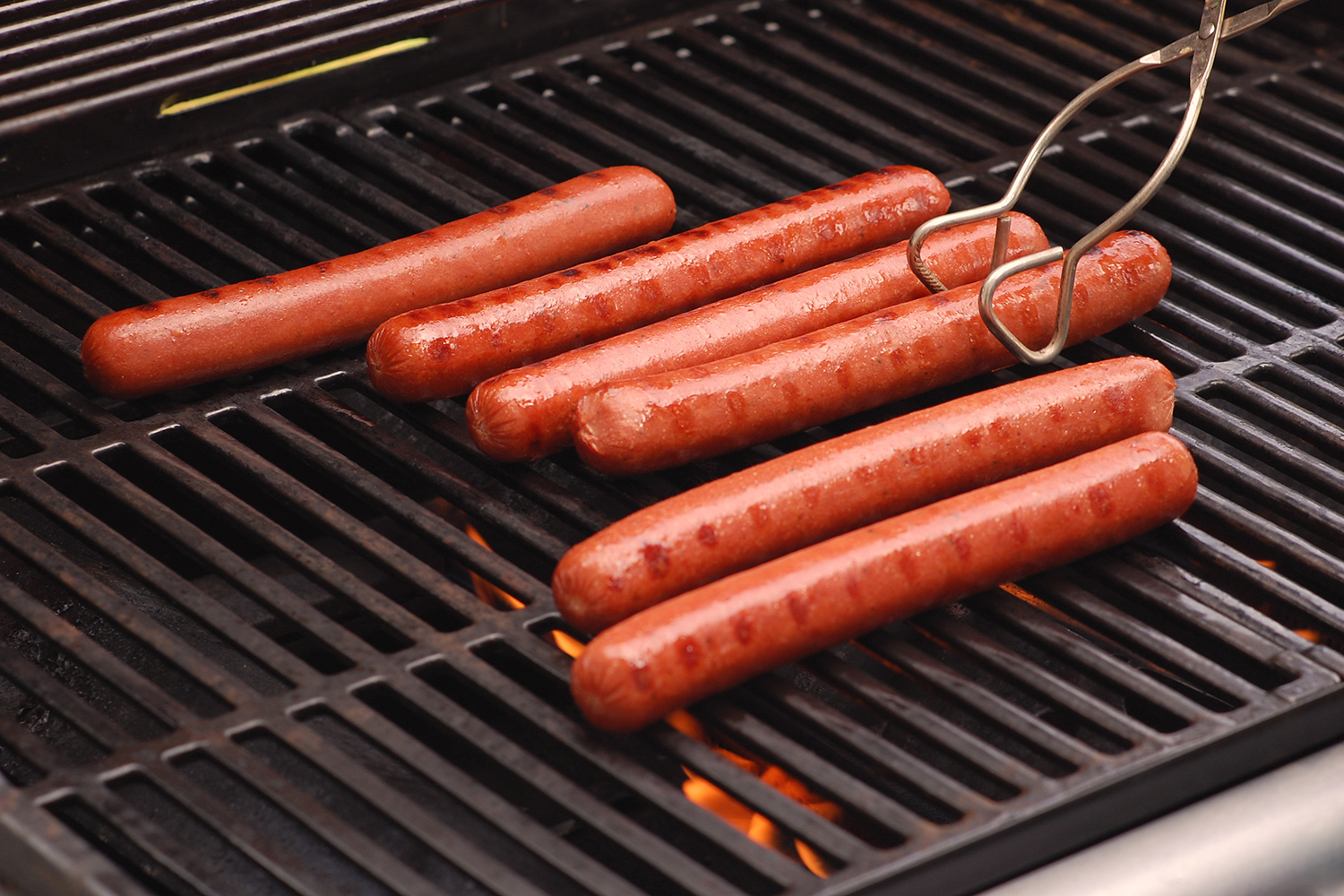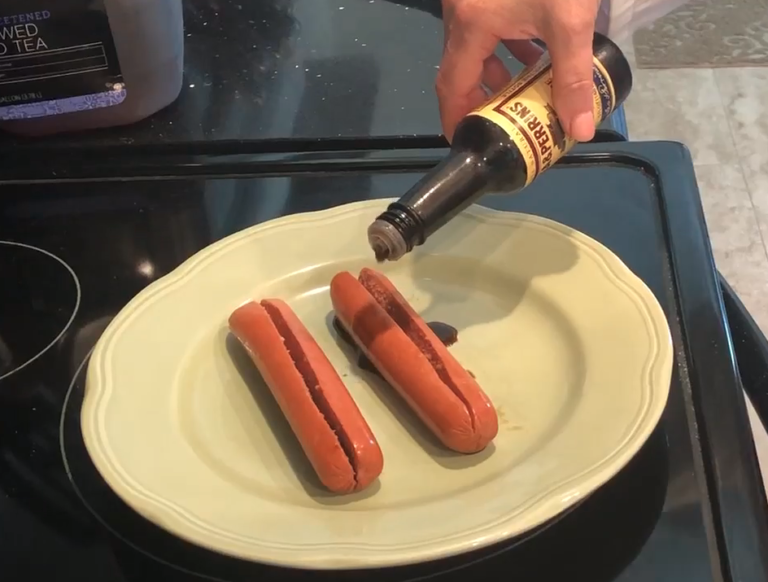Master the Art of Cooking Delicious Hotdogs on the Stove
I. Introduction

A. The versatility of cooking hotdogs on the stove
The stove provides a convenient and versatile cooking surface for hotdogs. Whether you’re in a small kitchen with limited cooking equipment or prefer a stovetop method, this article will guide you through the process of cooking hotdogs on the stove.
B. Benefits of stove cooking compared to other methods
When compared to grilling or microwaving, stove cooking offers more control over the cooking process. It allows you to achieve the desired level of doneness, texture, and flavor. Stove cooking also gives you the opportunity to experiment with different techniques and seasonings.
C. Overview of the article’s content
This article will cover all aspects of stove cooking hotdogs. It begins with selecting the right hotdog variety, considering factors such as meat type, taste preferences, and dietary restrictions. Proper storage and thawing techniques will also be discussed. Next, the article moves on to various cooking techniques for hotdogs on the stove, including boiling and pan-frying. Additionally, it will explore enhanced flavor and texture techniques such as griddling and butter-basting.
II. Preparing the Hotdogs
A. Choosing the right hotdog variety and quality
- Options like beef, pork, chicken, and vegetarian hotdogs Hotdogs come in a variety of meat options to cater to different preferences and dietary needs. Beef hotdogs are the most common and provide a classic flavor. Pork hotdogs are also popular, offering a slightly different taste. Chicken and vegetarian hotdogs are excellent alternatives for those who don’t consume red meat or prefer plant-based options.
- Considerations for health-conscious individuals (low-sodium, nitrate-free, etc.) If you have specific health requirements, you can find hotdogs that are low in sodium or nitrate-free. These options are ideal for individuals monitoring their sodium intake or have sensitivities to nitrates.

B. Proper storage and thawing of hotdogs
- Refrigeration, freezing, and shelf life guidelines To ensure the longevity and freshness of your hotdogs, storing them properly is essential. Unopened hotdogs can be refrigerated for several weeks or frozen for longer-term storage. However, it’s important to check the expiration dates and follow the recommended storage guidelines provided by the manufacturer.
- Safe methods for thawing if using frozen hotdogs If you’re using frozen hotdogs, it’s essential to thaw them safely to maintain their quality. The ideal method is to thaw them in the refrigerator overnight. However, if you need to thaw them quickly, you can use the defrost function on your microwave or place them in a sealed plastic bag and submerge them in cold water.
III. Cooking Techniques for Hotdogs on the Stove
A. Basic Stovetop Method
- Boiling hotdogs in water Boiling is a simple and effective way to cook hotdogs on the stove. To do this, follow these steps: a. Set up a pot with water and add salt to enhance the flavor. b. Bring the water to a boil over medium-high heat. c. Add the hotdogs and simmer them for the recommended cooking time (usually about 5-7 minutes).
- Pan-frying hotdogs Pan-frying is another popular stove cooking method that adds a delicious crispy exterior to the hotdogs. Follow these steps: a. Preheat a skillet or frying pan over medium heat. b. Add a small amount of oil or butter to the pan. c. Place the hotdogs in the pan and cook for a few minutes on each side until they are browned and heated through.
B. Enhanced Flavor and Texture Techniques

- Griddling hotdogs Griddling hotdogs on a grill pan or cast-iron skillet can give them a smoky, charred flavor. Follow these tips: a. Heat the grill pan or skillet over medium-high heat until it’s hot. b. Place the hotdogs on the grill pan or skillet and cook for a few minutes on each side to create charred marks. c. Turning them occasionally to ensure even cooking.
- Butter-basting hotdogs Butter-basting is a technique that adds richness and a crispy exterior to hotdogs. Here’s how to do it: a. Melt butter in a separate pan over medium heat. b. Place the hotdogs in the melted butter and baste them with a spoon. c. Continue cooking and basting until the hotdogs develop a crispy exterior.
IV. Dressing and Serving your Hotdog Creations
Once your hotdogs are cooked to perfection, it’s time to dress them up and serve them in a way that suits your taste preferences. Here are some tips on choosing the right buns and condiments to complement your stove-cooked hotdogs:
A. Choosing the right buns and condiments
- Traditional versus specialty hotdog buns: Traditional hotdog buns are soft and can easily hold the hotdog without falling apart. However, if you’re looking to add some variety, you can opt for specialty buns like pretzel buns, brioche buns, or even whole wheat or gluten-free varieties.
- Assortment of condiments: The condiments you choose can make a huge difference in the flavor profile of your hotdogs. Classic options like ketchup, mustard, and relish are universally loved, but you can also get creative and experiment with other toppings like sauerkraut, chopped onions, salsa, guacamole, or even jalapenos for a spicy kick.
B. Popular Hotdog Style Variations
- Chicago-style hotdogs: A Chicago-style hotdog is typically topped with yellow mustard, chopped onions, sweet pickle relish, a dill pickle spear, tomato wedges, sport peppers, and a sprinkle of celery salt. This combination of flavors creates a unique and delicious hotdog experience.
- New York-style hotdogs: A New York-style hotdog is a simple yet satisfying option. It is traditionally topped with mustard and sauerkraut, giving it a tangy and savory flavor.
- Alternative global variations: Hotdogs are not limited to American-style toppings. Take inspiration from around the world and try adding Mexican-inspired toppings like salsa, avocado, and jalapenos, or Japanese-inspired toppings like teriyaki sauce, Japanese mayo, and seaweed flakes. These variations can add exciting flavors and make your hotdog creations stand out.
V. Summary and Tips for a Perfect Stovetop Hotdog Experience

A. Recap of the key steps and techniques discussed: In this article, we have discussed the versatility of cooking hotdogs on the stove, from choosing the right hotdog variety to properly storing and thawing them. We have explored different cooking techniques like boiling and pan-frying, as well as techniques to enhance the flavor and texture, such as griddling and butter-basting.
B. Additional pointers for creating memorable hotdog dishes: To take your hotdog creations to the next level, consider experimenting with different seasonings and marinades for your hotdogs. You can also try wrapping them in bacon for added flavor and texture. Additionally, don’t forget to toast or warm your buns before assembling your hotdogs to elevate the overall taste experience.
C. Encouragement to experiment and personalize recipes: The beauty of stove-cooked hotdogs is that they can be customized to suit your preferences. Don’t be afraid to experiment with different toppings, condiments, and cooking techniques to create your own signature hotdog creations. Whether you’re a fan of classic flavors or love to explore new and exciting combinations, the stove is a great place to unleash your creativity.
In conclusion, stove cooking hotdogs allows for a versatile and convenient cooking method that can be personalized to your liking. By following the steps and techniques discussed in this article and exploring different toppings and condiments, you can create delicious and memorable hotdog dishes that will satisfy your cravings. So fire up your stove, grab your favorite hotdog variety, and get cooking!